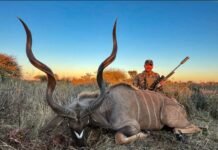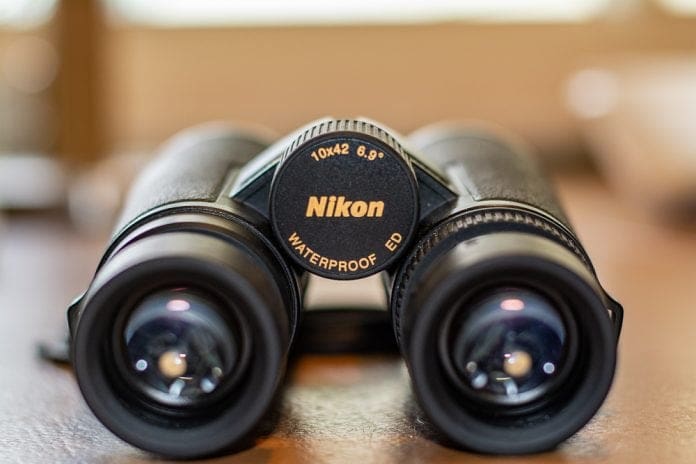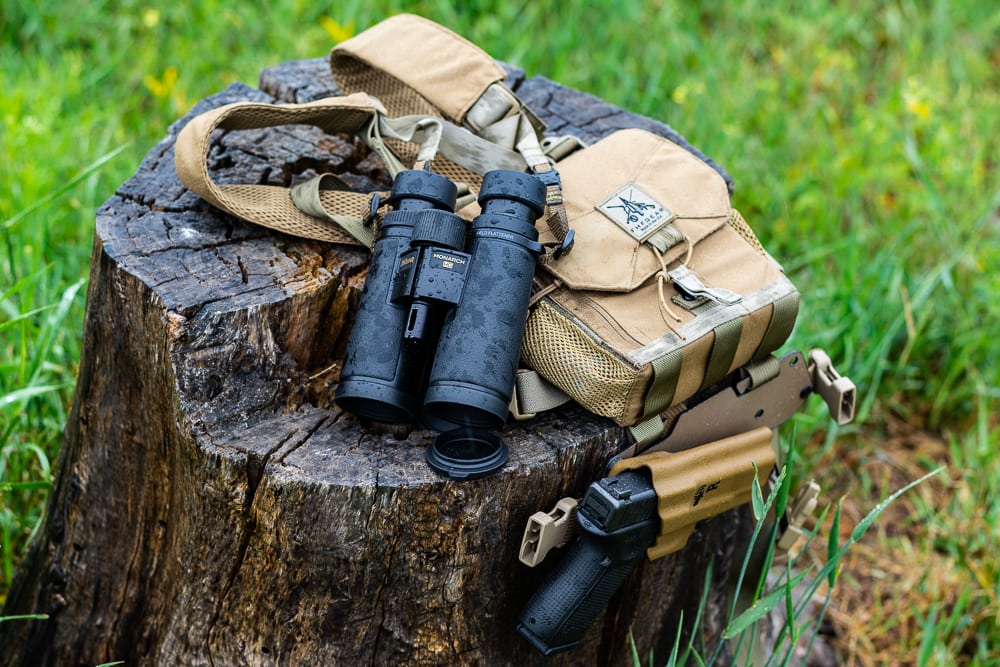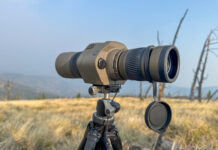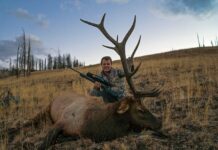Nikon Monarch HG 10X42 Review
by Matt Cashell, Rokslide Prostaff
Through Rokslide, I have had some great opportunities to look at new optics and how they suit mountain hunters. I have had the chance to check out entry-level binoculars in the $200-$500 range, mid-priced in the $600 – $1200 range, and top-end ‘nocs ranging from $1800 to well over $3000. This revew will cover the Nikon Monarch HG 10X42.
Generally, hunting binoculars follow two opposing rules:
Rule 1: You get what you pay for. If you want the best, prepare to spend some serious cash. You are going to need literally thousands of dollars to get into that top-end category.
Rule 2: The law of diminishing returns. As you increase your spending it takes more and more money to get less and less performance improvement.
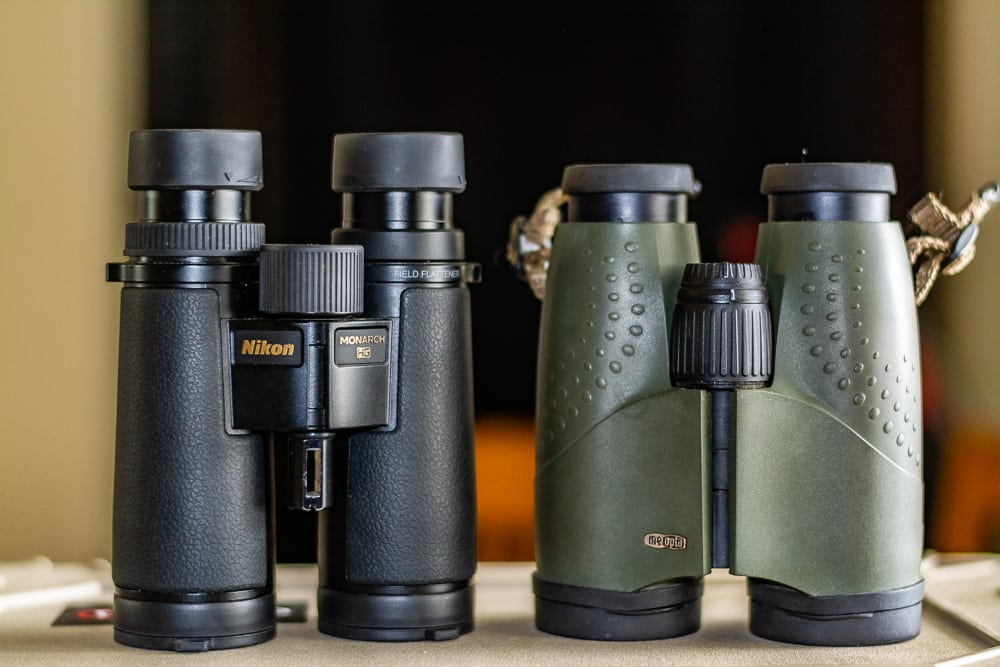
I have long held that mid-priced binoculars provide most hunters the best balance of performance and price. Years ago, this was reinforced by my experience with the Meopta Meostar HD 10X42. The Meostar provided near-alpha performance at around $1000. Other companies entered the market at the price point, and although some of the instruments were very good, none of them were able to tip the Meostar HD off the mid-priced pedestal. Now Nikon enters the fray with the Monarch HG.
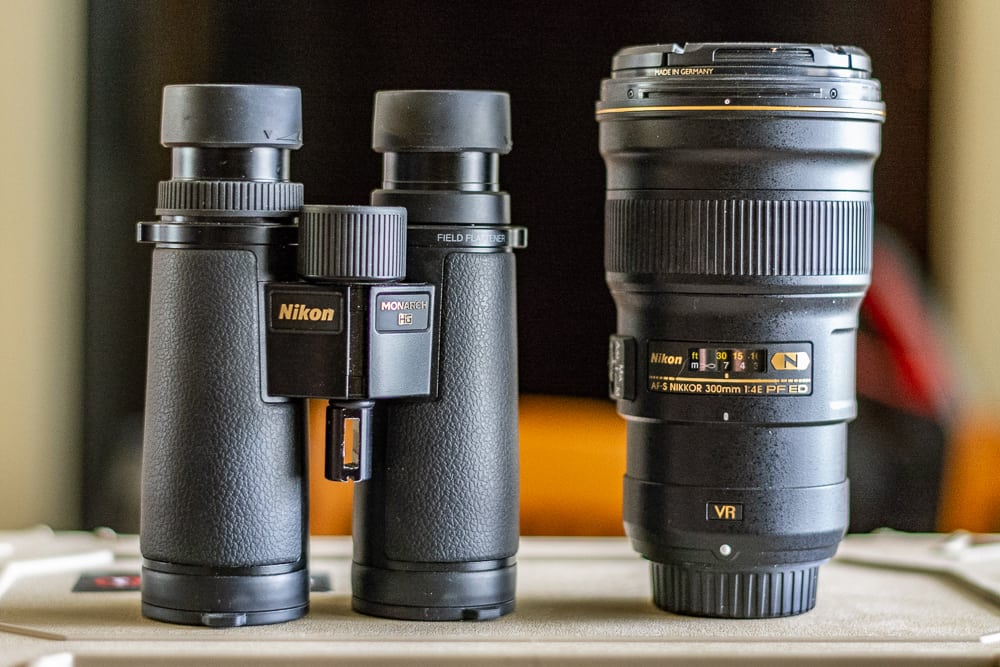
Many hunters know that Nikon has been producing some of the best camera lenses available for decades. However, their sport optics have often been overlooked with the European companies often stealing the spotlight. The truth is Nikon has been producing quality binoculars for over 100 years. Hunters are most familiar with the more recent Monarch Series binoculars that provided solid performance in a durable housing at an entry-level price. They didn’t have top-shelf optical performance, but hunters bought them up in mass due to the value they offered. Nikon’s expensive and top-performing EDG binocular line arrived in 2010. Prior to that, Nikon’s top roof prism binocular was the HG which stood for “High Grade.” The HG was popular with birders due to the excellent build quality and excellent optical performance.
In 2016, Nikon merged the old HG brand with the Monarch brand into the new Monarch HG line of binoculars. The goal is to offer a binocular with top end HG performance with Monarch levels of value. Let’s see how they did:
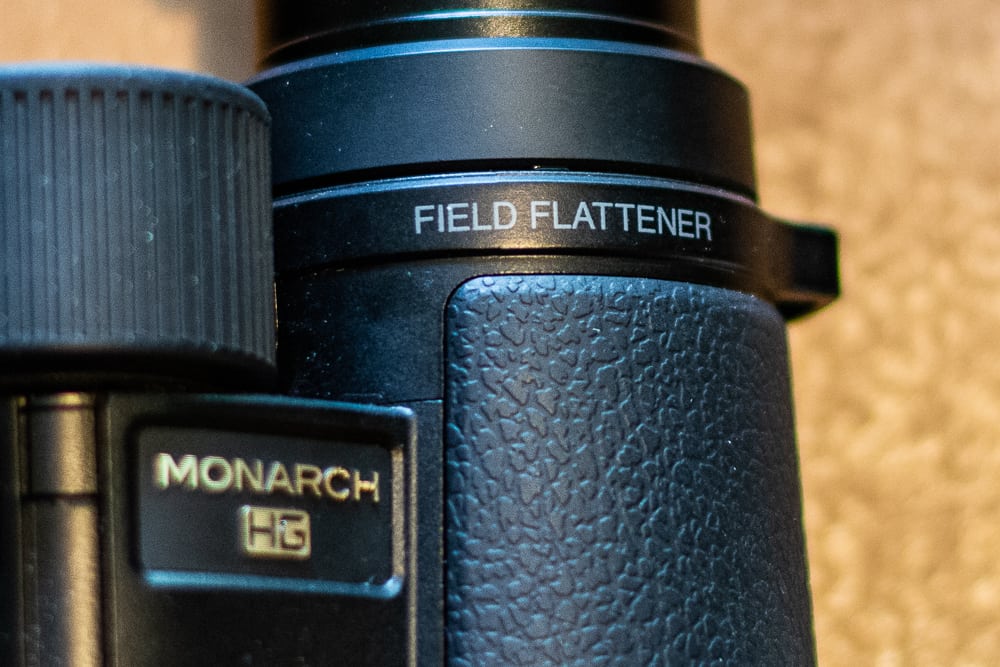
Technology:
Nikon threw the technology book at the Monarch HG. They use ED (extra-low dispersion) glass elements to minimize chromatic aberration. A field flattened eyepiece provides a wide, flat field of view. The quality Schmidt-Pecan prisms are properly phase coated for excellent apparent sharpness. Interior blackening is very good and internal reflections are negligible. The frame is a light and strong magnesium alloy. The Monarch HG is fully waterproof and nitrogen purged. The exterior coatings hydrophobic, making for easy cleaning with great resistance to rain and other moisture. High quality antireflective coatings preserve light through the system.
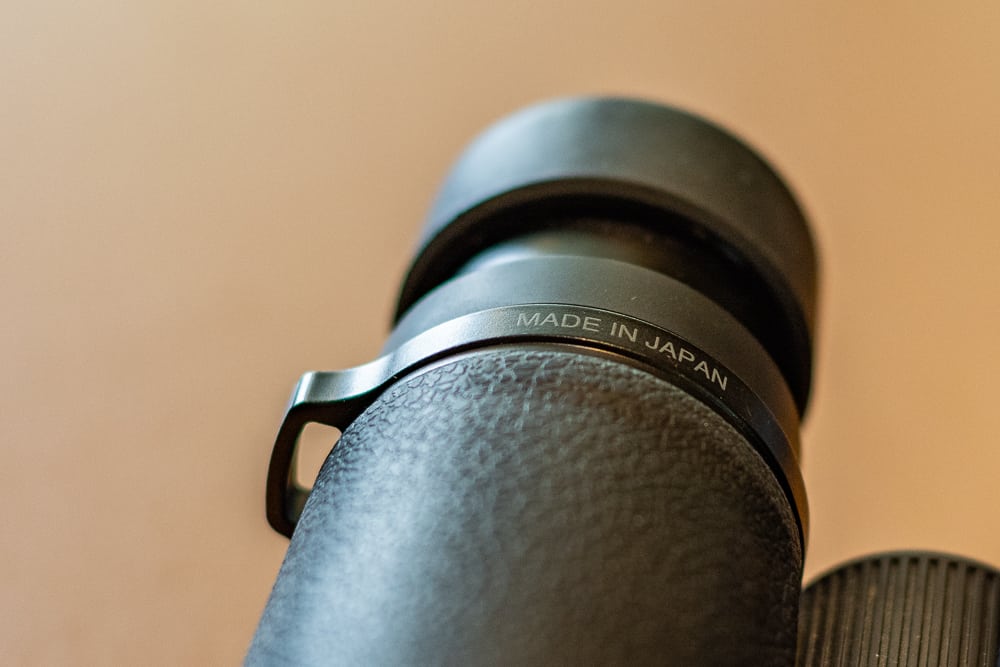
Build quality:
Nikon kept the Monarch HG production in house, and the unit is proudly marked, “Made in Japan.” Fit and finish is excellent, and comparable to more expensive units. The locking diopter adjustment is on the right barrel.
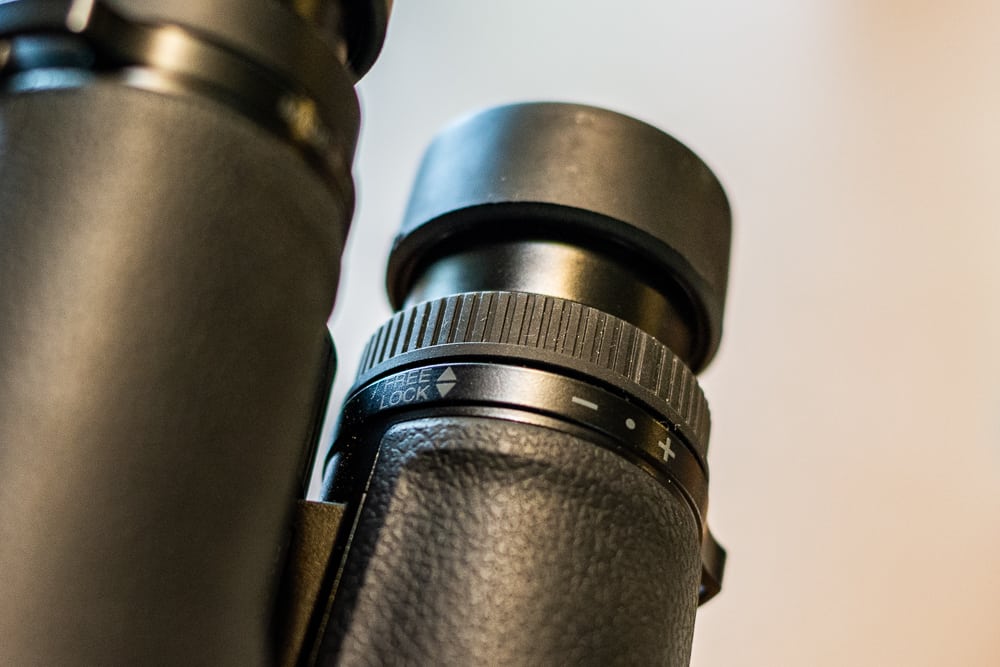
Eyecups are covered in smooth rubber armor and have three detents to allow the user to accommodate the 17mm of eye relief. I found the eyecups fit me best fully extended, and accommodated glasses easily when collapsed. Unfortunately, the eyecups are not removable for cleaning. Lightly textured rubber armor of extremely high quality surrounds the barrels except at the very interior where smooth anodized metal bridges the gap. A solid 1/4-20 receiver is in the bridge for easy mounting of a tripod adapter.
Focus goes from closest to past infinity in 1.5 turns of the large rubber central focus wheel, which has a smooth, medium-firm, and damped feel. The binocular has a single, small bridge that exposes the barrels for a secure grip, even one-handed.
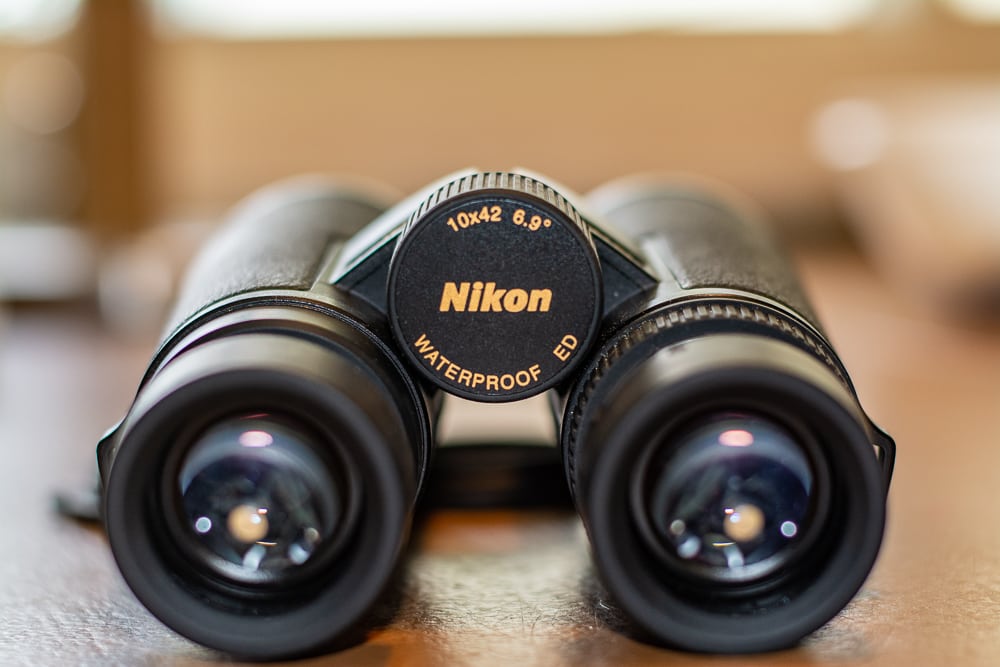
Accessories include a rubber rainguard, padded strap, and integrated objective caps. The caps were a revelation. No more having to worry about the caps falling off, or having to secure them with electrical tape. the integrated caps could still be removed with a concerted effort, and Nikon included some rings to replace the caps, if the user doesn’t want to leave them on. Very nice!
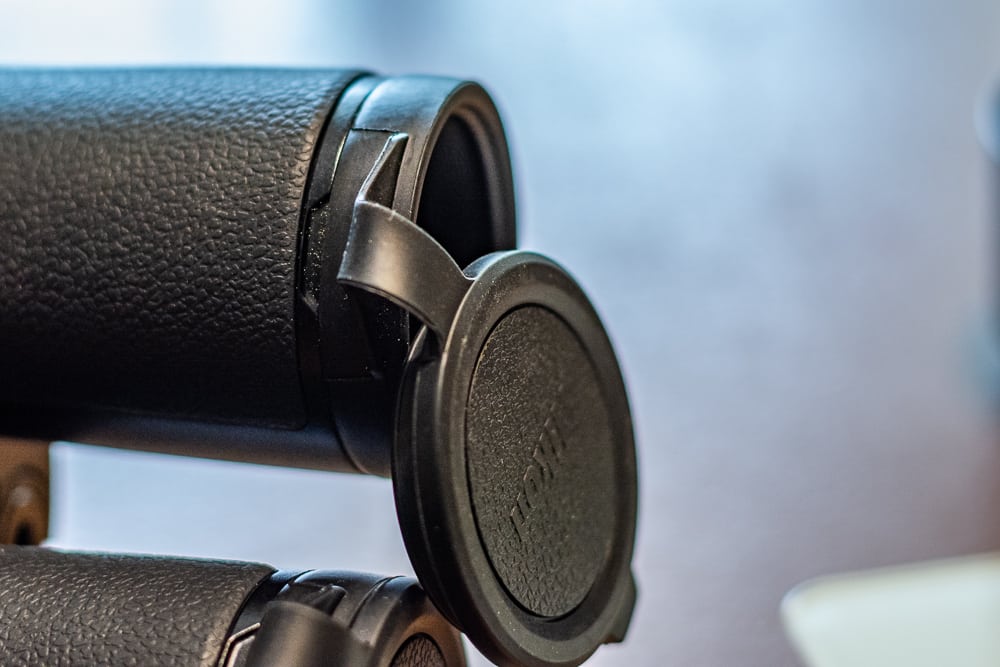
Optical Performance:
The Monarch HG is stunning optically. The field of view is spectacularly wide at 6.9 degrees. Compare this to the Swarovski EL SV at 6.4 degrees, or the Meopta Meostar HD’s 6.3 degrees, and the hunter realizes he can see more mountain without giving up any magnification. The view is pin sharp–like, impressively sharp–and comparable to anything available at any price. Brightness was outstanding, and showed a clear advantage over the Meostar HD in side-by-side comparison at failing evening light. Peering deep into shadowy areas, detail was preserved notably better. Distortion was extremely low. Straight lines stayed straight until the very edge of the massively wide field. Edge sharpness was good with maximum sharpness maintained until quite near the edge. Chromatic aberration control was good in the center of the field, and increased to the point that fringing was pretty noticeable near the edge. While still quite good, chromatic aberration control was the one area where the Monarch HG didn’t excel as much as the Meostar HD, which is near-perfect in this area.
Field Performance:
I was able to spend quite a bit of time in the backcountry with the Monarch HG, including trusting it as my only binocular for the annual Rokslide Bear Hunt in North Idaho. Bear hunting is very glassing-intensive and requires persistence right to the end of shooting light. The Monarch HG did not disappoint, as it was still offering a useful view right up to, and past shooting light. One major field advantage is the Monarch HG’s light weight. At a svelte 24.8 ounces, it saves a half pound over the Meostar HD. The excellent apparent depth of field also made for a great user experience. Once focus was set, there was little need to touch the focus knob, even when moving near to far, much like the very expensive European models. Better than the European competition, the tripod exit on the Monarch HG made getting it set up stable on a tripod quick and easy using a Field Optics Research tripod adapter, and not some cumbersome contraption.
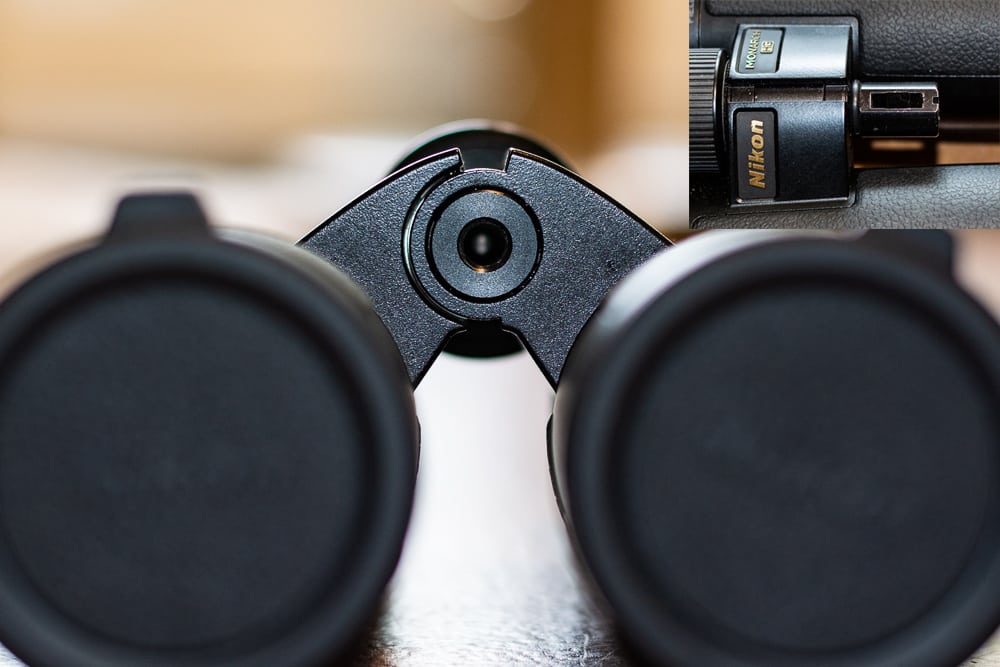
Conclusion:
The Meopta Meostar HD is no longer at the top of the podium for mid-priced binoculars in my opinion. The Nikon Monarch HG has finally knocked it off. The Monarch HG is lighter, brighter, and wider. Its performance competes with the likes of $2500 European flagships but at a MSRP of $999. The build quality is excellent. I wish the eyecups were removable, and the edge chromatic aberration control was as good as the rest of its optical categories, but I can still recommend the Monarch HG without reservation. As far as the rules of hunting optics go, this binocular gives the hunter WAY more than they pay for. Nikon hit it out of the park with this one. Well done Nikon!
You can ask Matt questions or discuss this review here.








